Wie entsteht ein Handdruck?
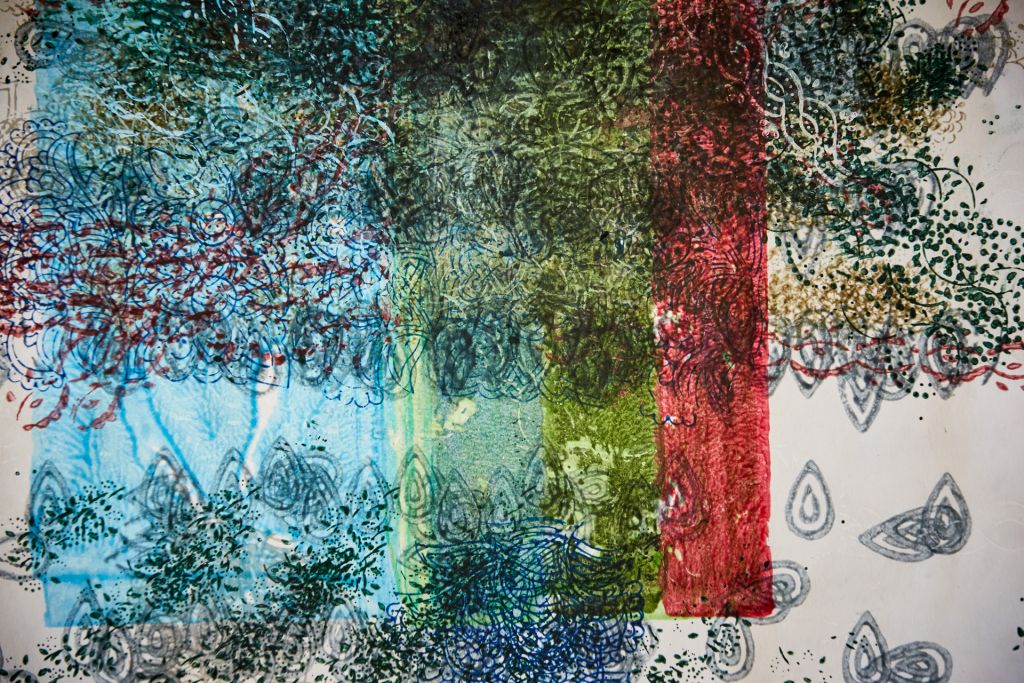
Zuallererst wird auf dem frisch überzogenen vier Meter langen Drucktisch der Stoff fadengerade mit Nadeln aufgespannt.
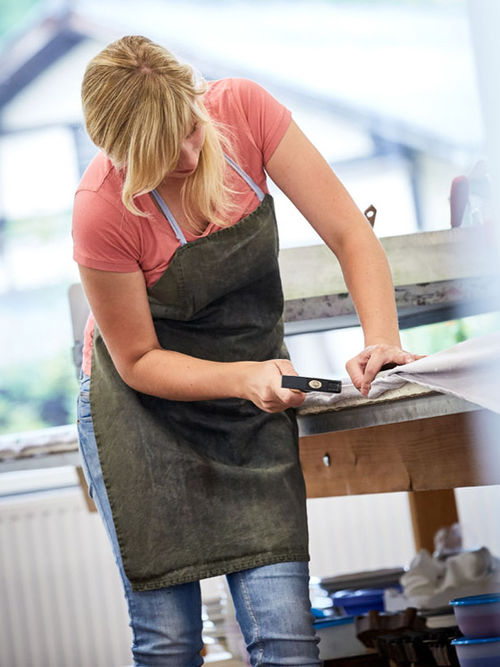 |
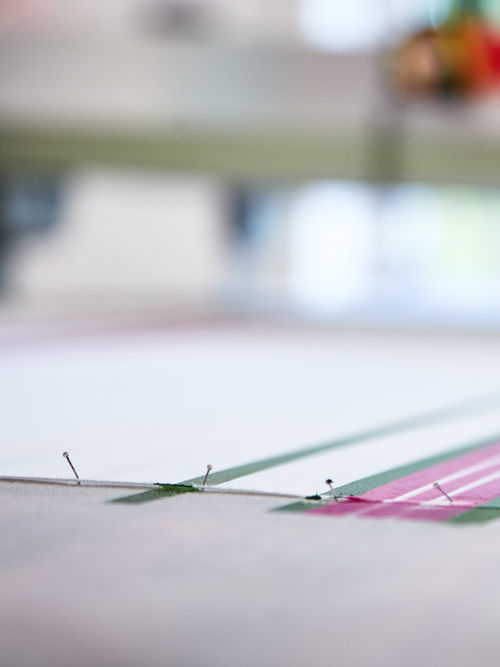 |


Zuallererst wird auf dem frisch überzogenen vier Meter langen Drucktisch der Stoff fadengerade mit Nadeln aufgespannt.
 |
 |
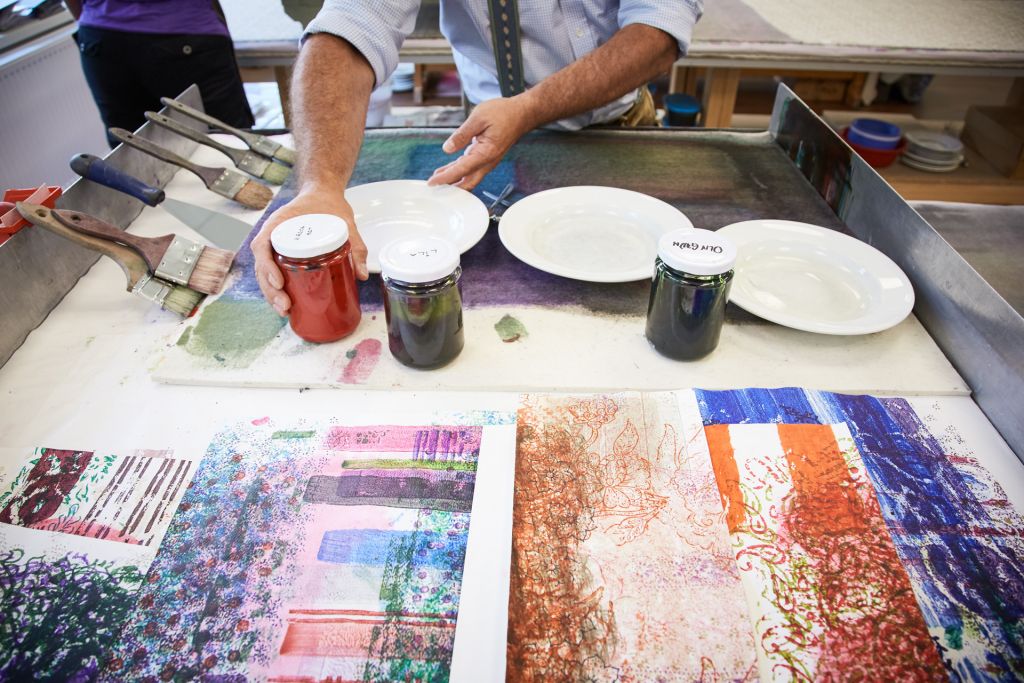
Die Farben werden nach Farbvorstellungen jeweils neu gemischt, bis der gewünschte Farbton erreicht ist. Dieser Arbeitsschritt ist zeitaufwändig, bedarf eines sehr guten Farbgefühls und kann mehrere Stunden dauern.
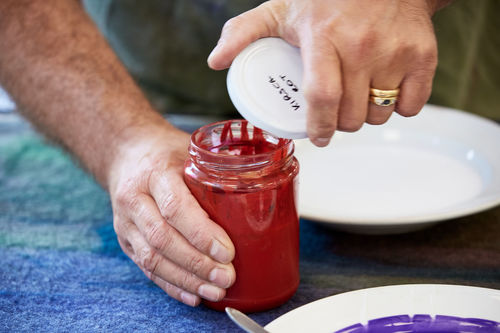 |
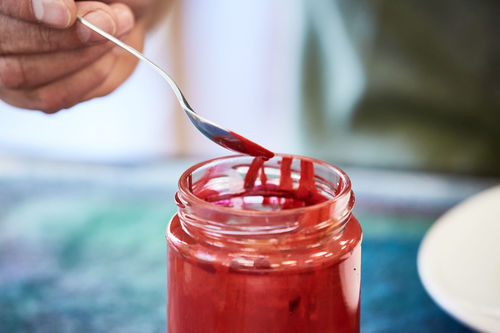 |
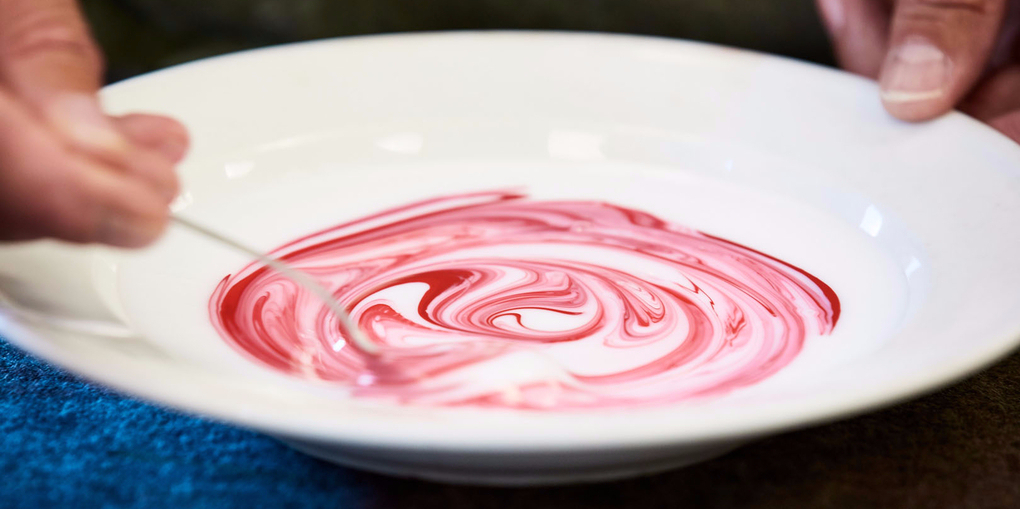 |
|
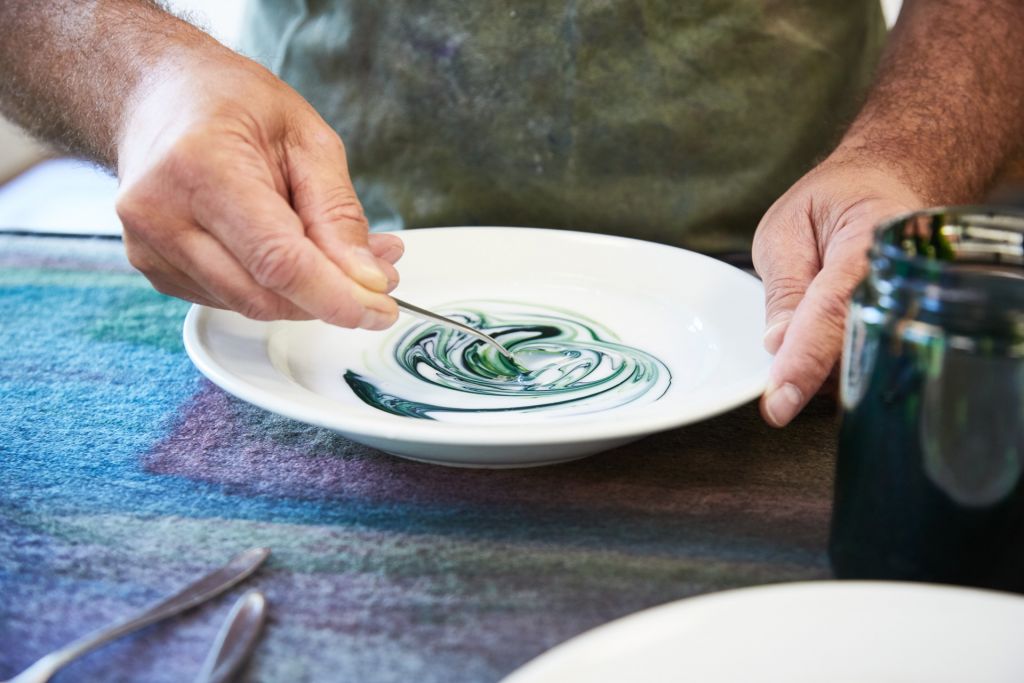
Die Ausgangsbasis bildet eine weiße Emulsion und Farbkonzentrate, sowie die Primärfarben. Daraus werden alle Farbnuancen gemischt.
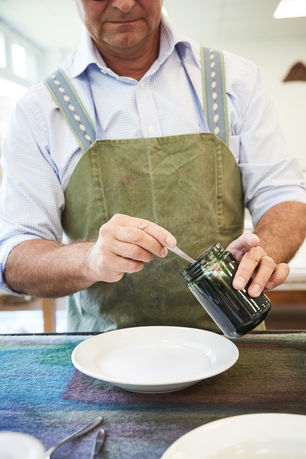 |
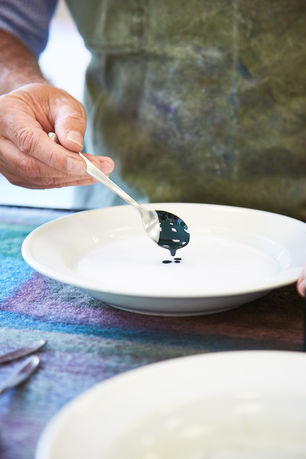 |
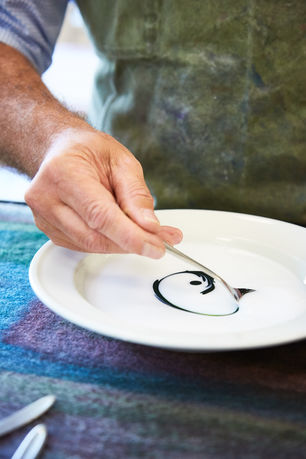 |
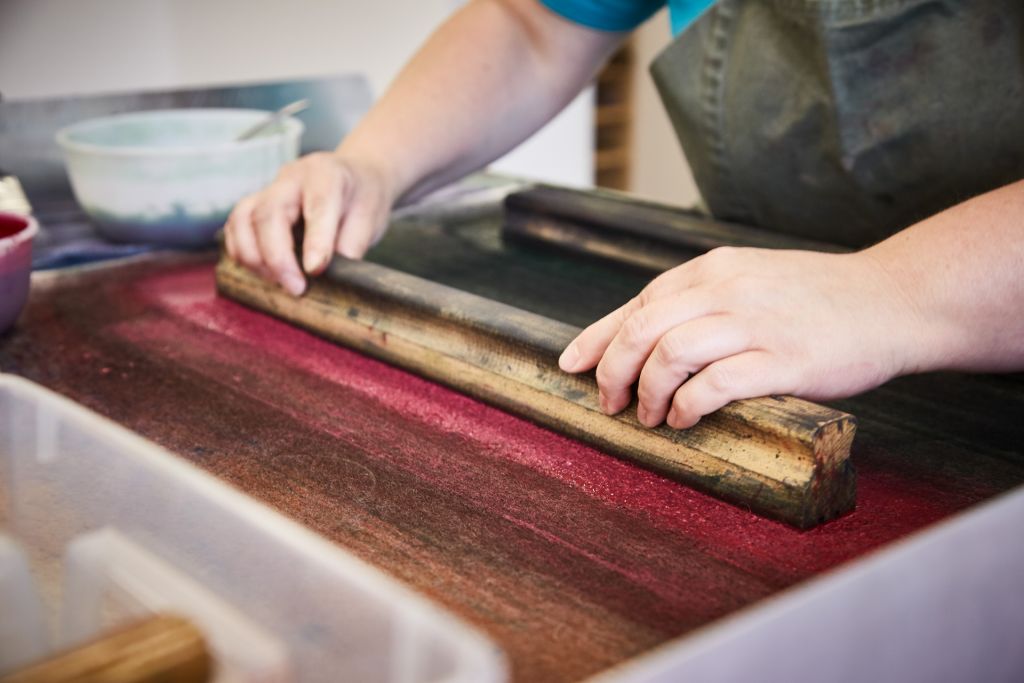
Die fertig gemischten Farben werden mit einem Pinsel auf den Druckfilz gestrichen. Angefangen wird mit glatten streifen Modeln für den Flächendruck. Der meditativ wirkende Prozess läuft ungefähr so ab: Model in Farbe tauchen - einatmen - ausatmen - drucken - in Farbe tauchen - einatmen - ausatmen.
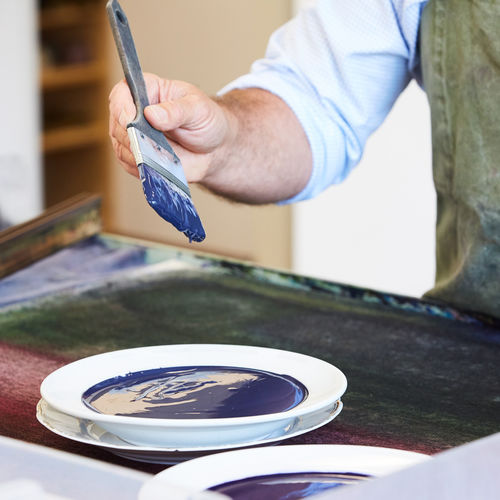 |
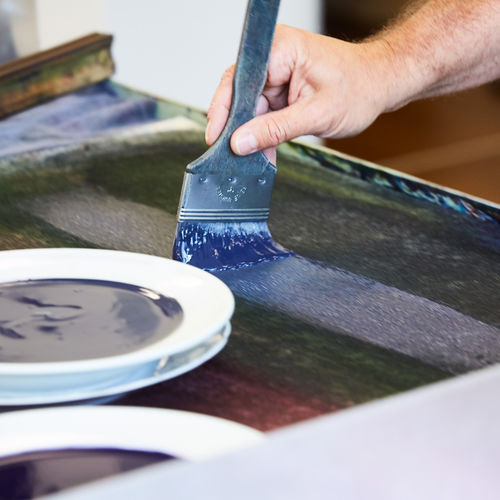 |
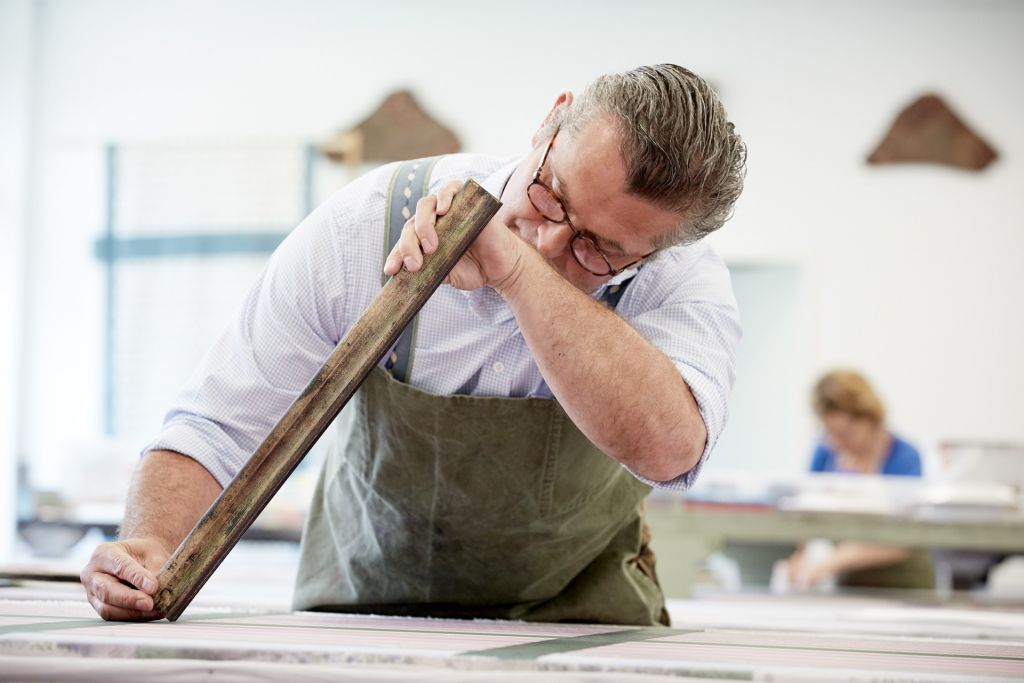
Beim Ansätzen der Model entstehen Zusammenstände, diese sind ein Merkmal des echten Handdruckes. Dafür braucht man eine ruhige Hand, Geschicklichkeit und Liebe. Überschüssige Farbe wird mit besonderer Vorsicht abgestrichen.
 |
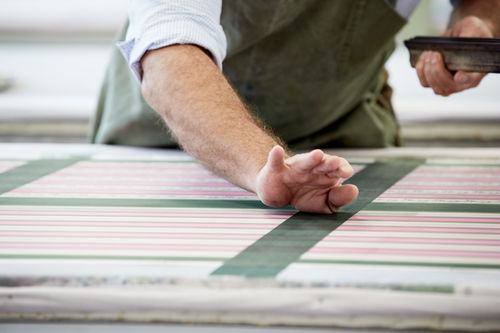 |
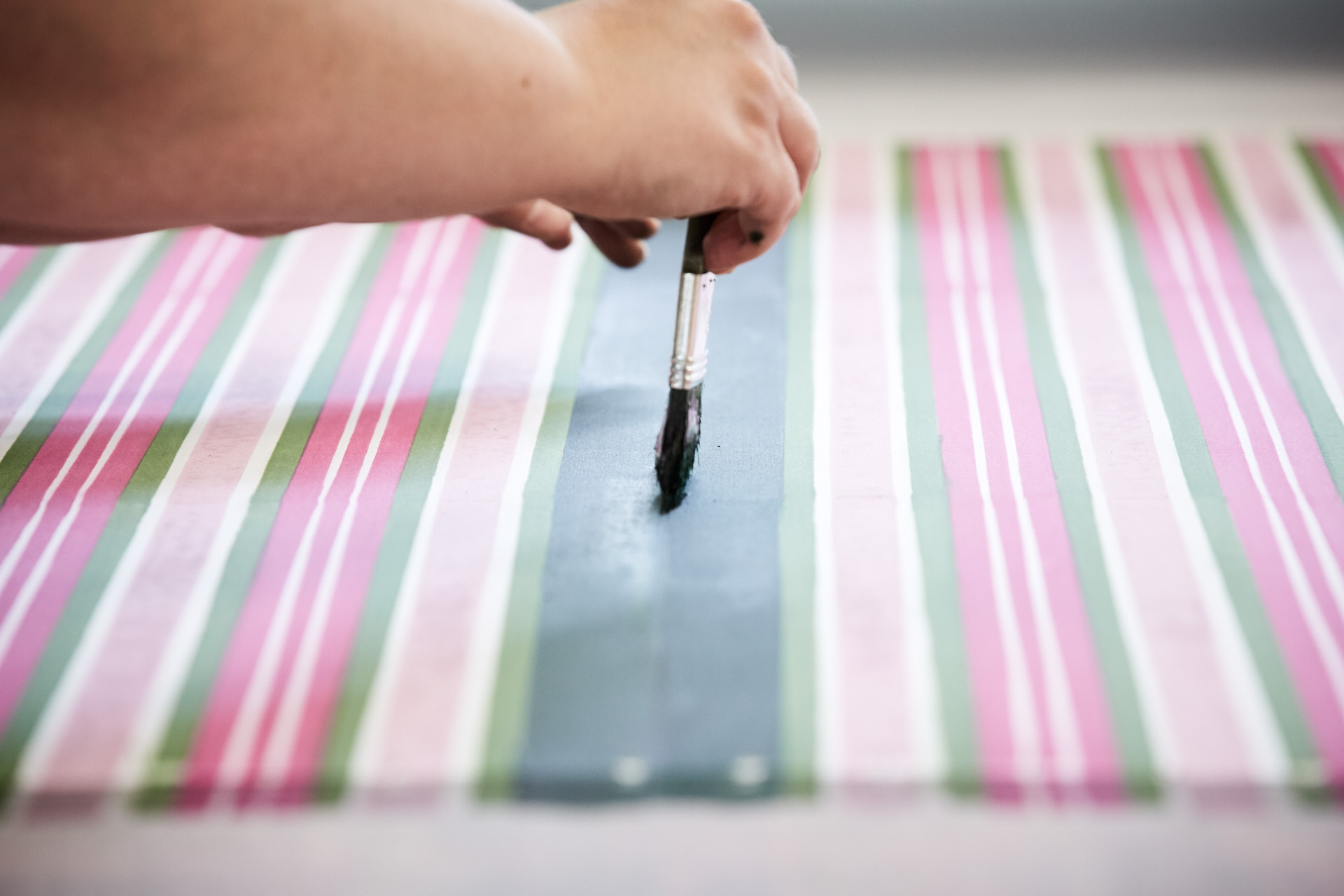 |
|
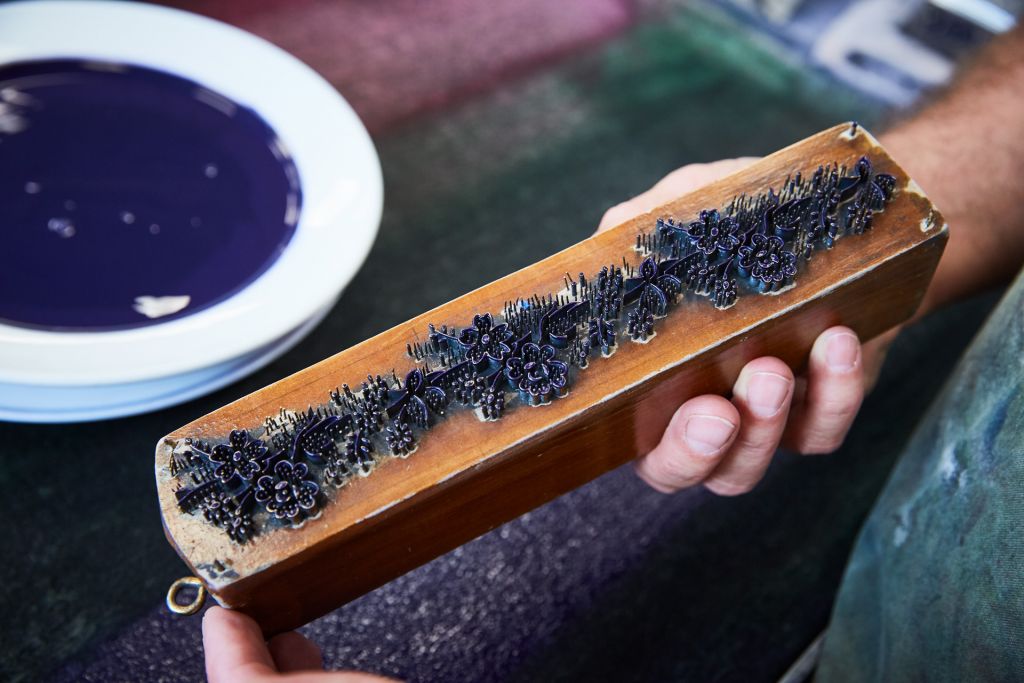
Nach dem Flächendruck erfolgt der Musterdruck. Die teilweise sehr alten Mustermodeln, sind die besonderen Juwelen der Druckerei. Die alten Modeln, welche noch in der Tradition der Formstecher angefertigt wurden, halten ewig. Bei diesen Modeln werden per Hand feine Messingstifte in ein Stück Eschen- oder Buchenholz eingeschlagen, die das Muster ergeben. Der Beruf des Modelstechers ist beinahe ausgestorben.
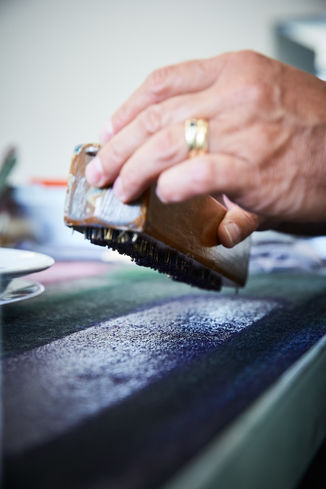 |
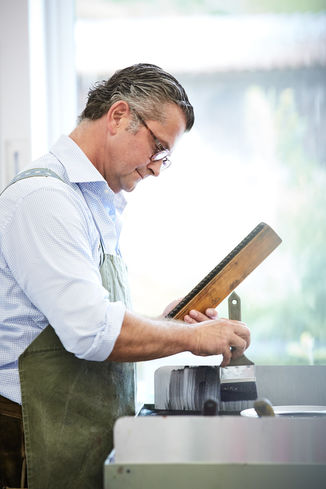 |
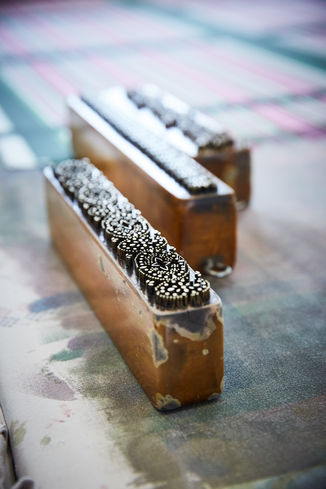 |
 |
||
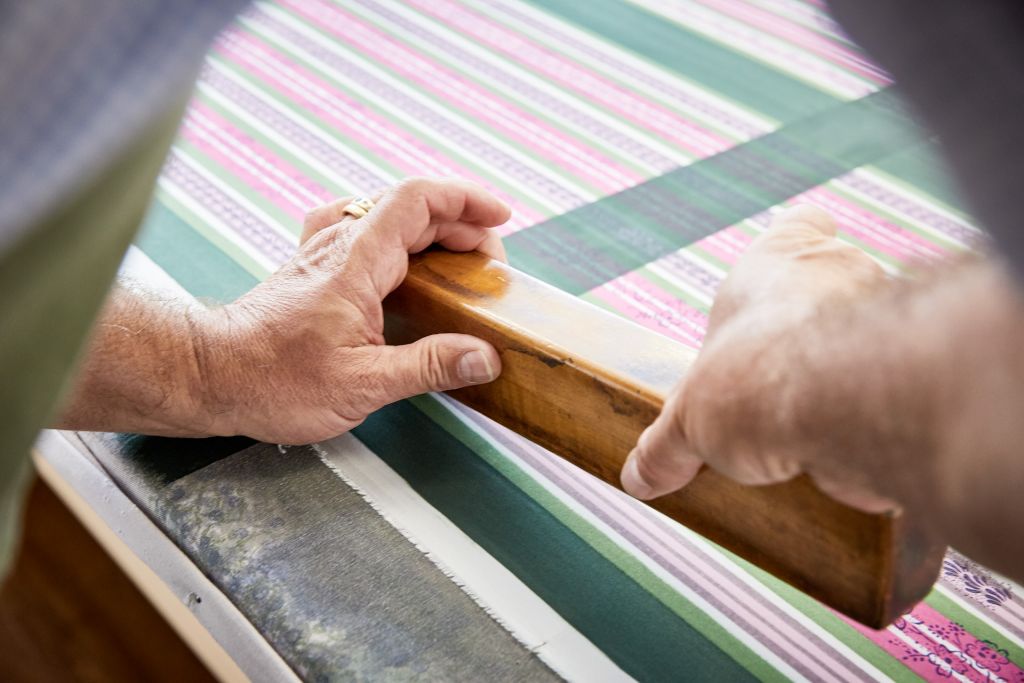
Jeder Model hat an den Enden Ansatzpunkte, diese sind wichtig um ein fortlaufendes Muster zu erhalten. Diese mitbedruckten Punkte sind ein besonderes Zeichen des Handdruckes und zeigen die reine Handarbeit und die Handschrift des Druckers.
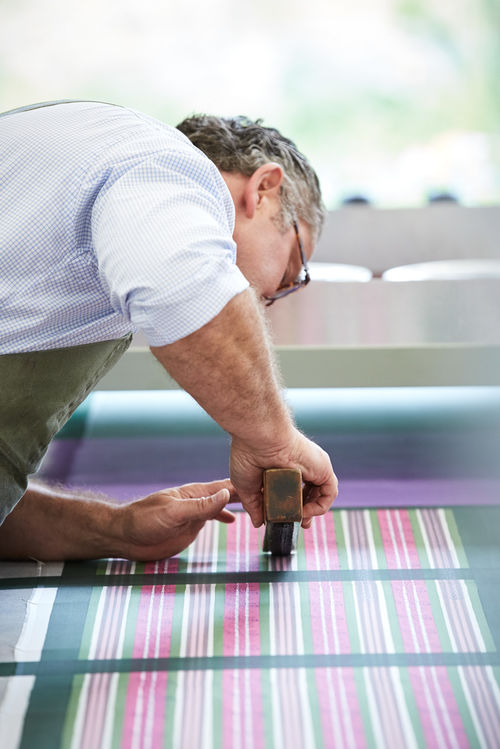 |
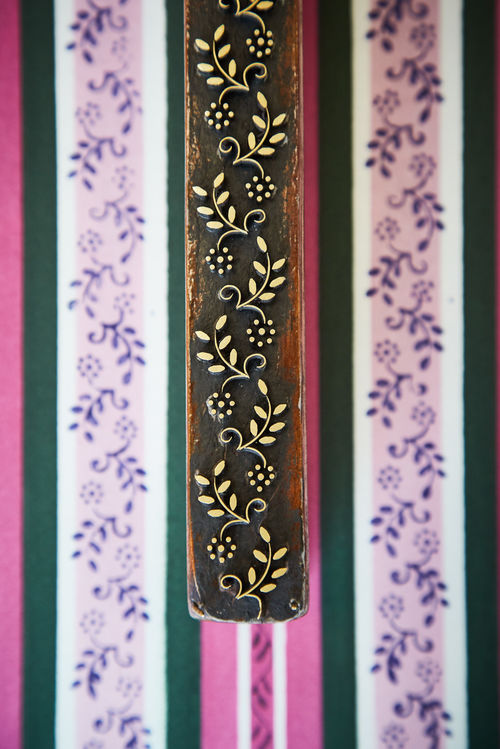 |
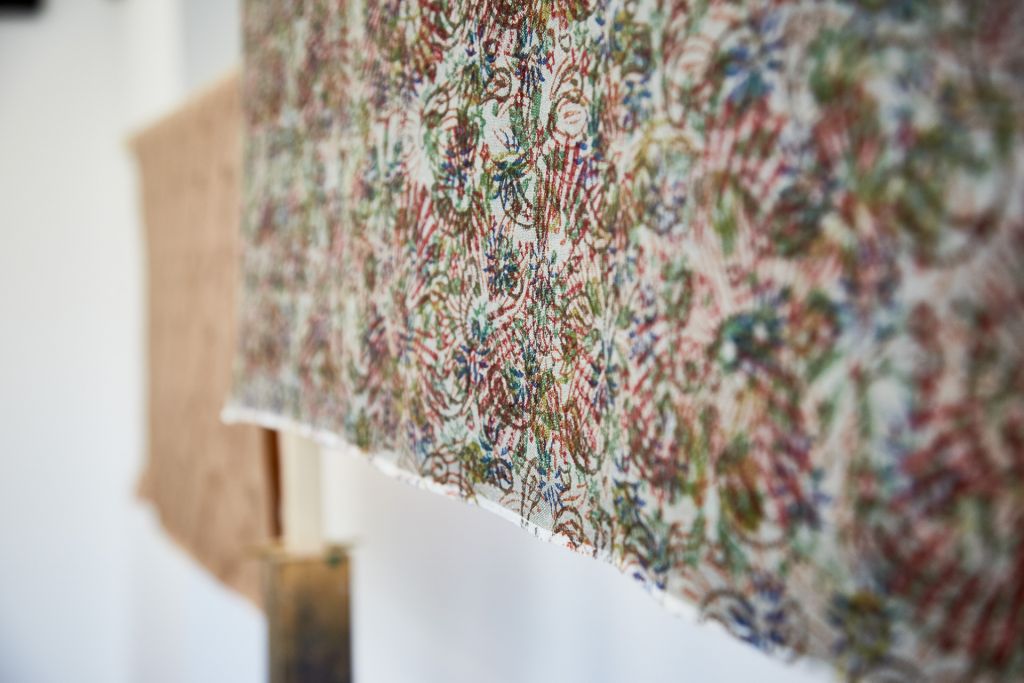
Nach dem Drucken werden die Stoffbahnen zum Trocknen aufgehängt und mittels Hitze fixiert. Nun wird die bedruckte Ware zur Weiterverarbeitung gegeben.
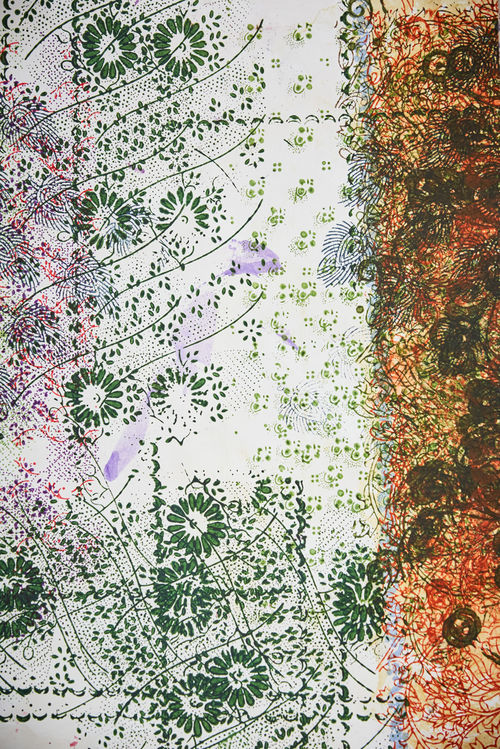 |
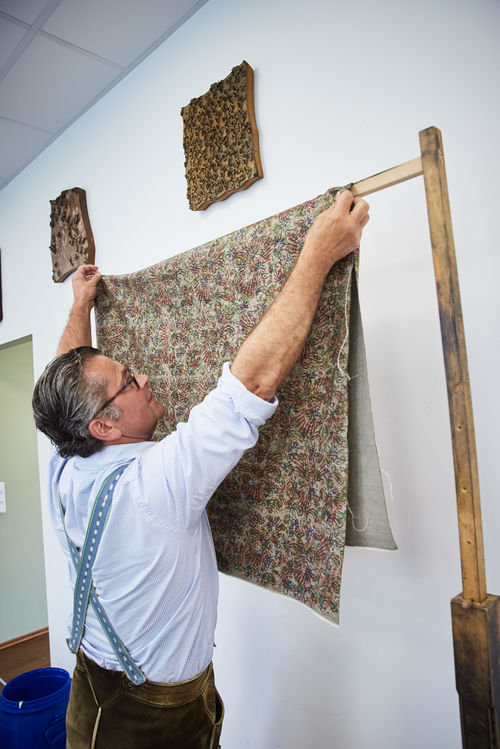 |